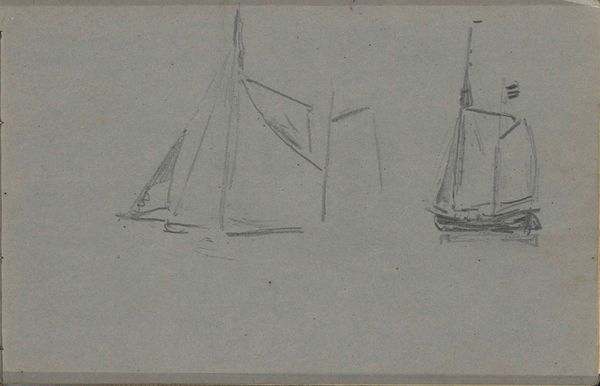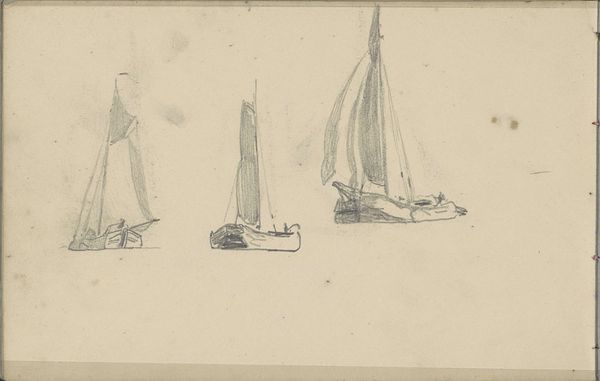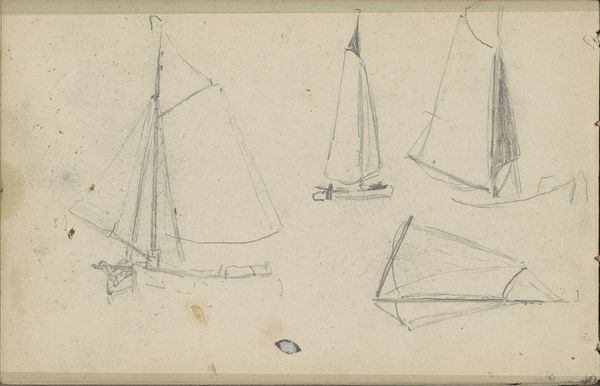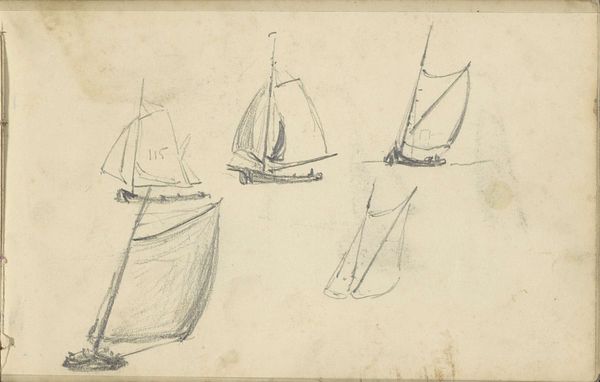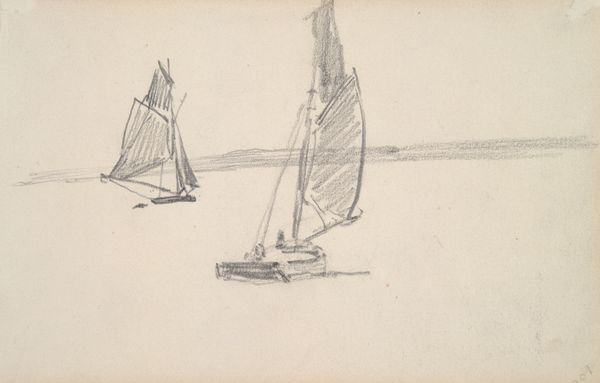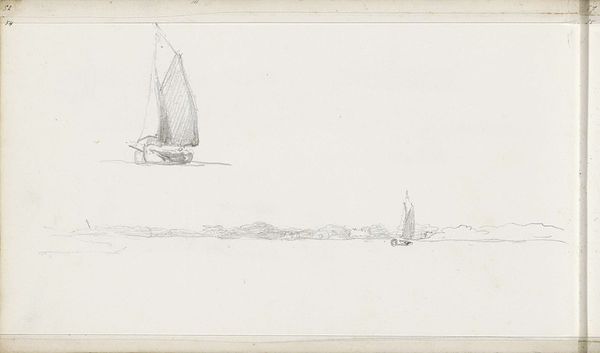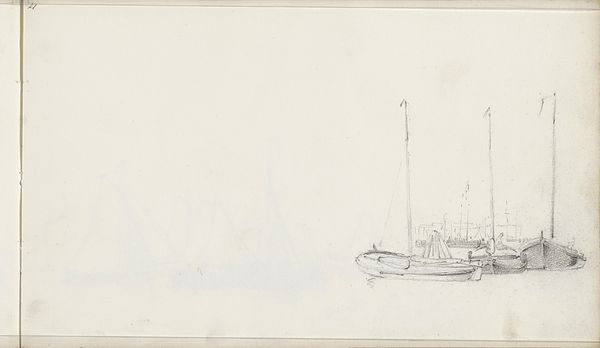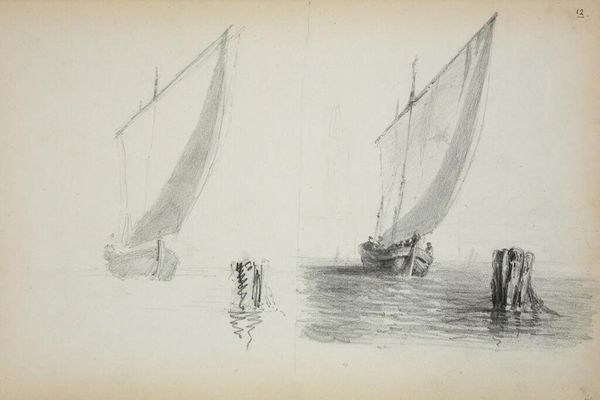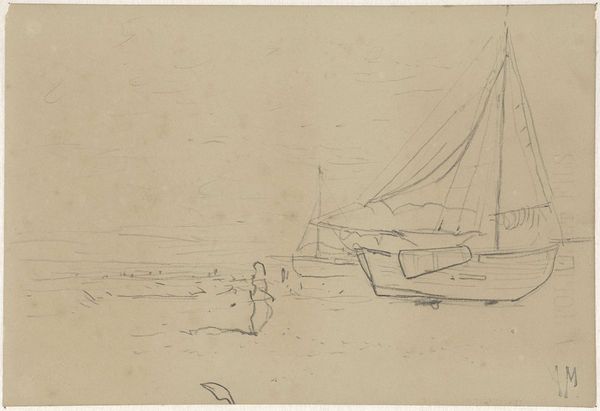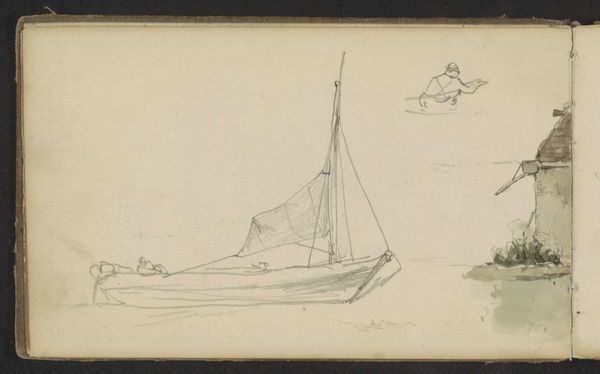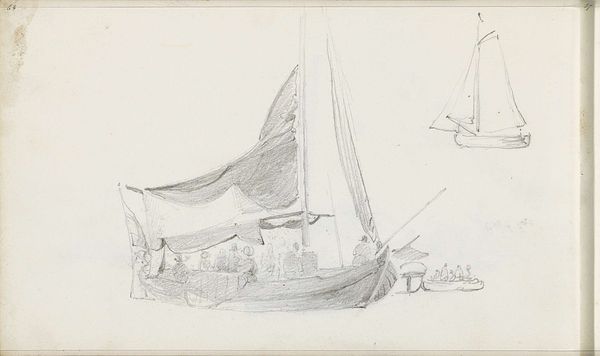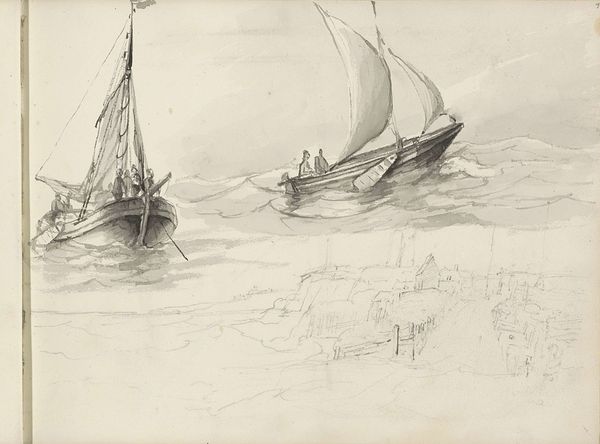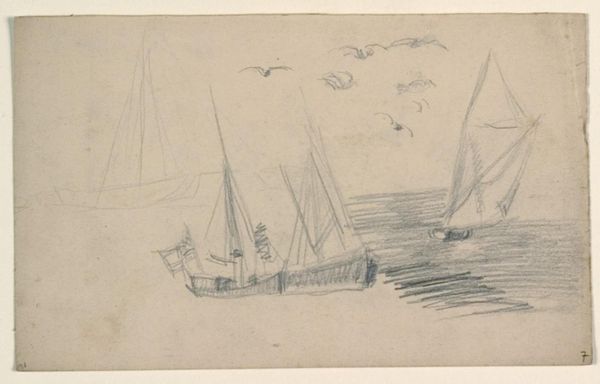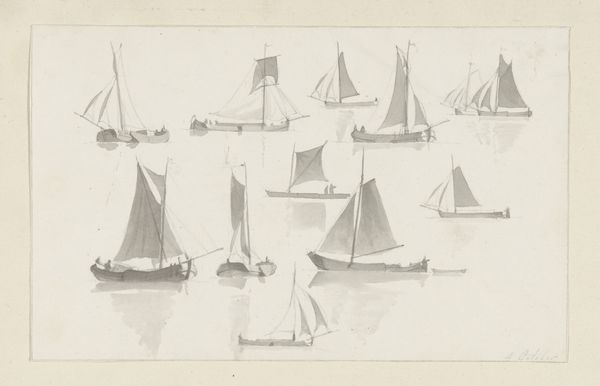
drawing, pencil
#
drawing
#
amateur sketch
#
light pencil work
#
pen sketch
#
incomplete sketchy
#
landscape
#
personal sketchbook
#
ink drawing experimentation
#
pen-ink sketch
#
pencil
#
pen work
#
sketchbook drawing
#
sketchbook art
#
realism
Copyright: Rijks Museum: Open Domain
Curator: Welcome! Today, we're observing "Studieblad met schepen," or "Study Sheet with Ships," a pencil drawing from the 1880s by Louis Apol, housed here at the Rijksmuseum. Editor: Immediately, I’m struck by the sparseness. It feels unfinished, intimate, like a quick glimpse into the artist’s private sketchbook. There’s a quiet simplicity to it. Curator: Indeed. Apol was primarily known for his winter landscapes, capturing scenes of daily life amidst snowy vistas. These were quite popular with the public and critics alike, fitting within a broader tradition of Dutch landscape painting. But works like these, that were made solely for his own eyes, provide us with unique insight. Editor: It raises questions about representation, doesn't it? Apol, celebrated for portraying working-class life in winter settings, presents something so delicate and unpopulated here. No fishing folk, just boats—as if stripped of their social purpose. I wonder about that choice. What commentary is offered by this quietness? Curator: The absence of figures can be interpreted in different ways. One is formal. The artist hones in on shape and composition without societal constraints. He trains his eye and hand. But beyond that, these fishing boats in the distance call out the significance of Dutch maritime history. Editor: I suppose you're right, the maritime activities were so integral to the nation's economic power during that time. By choosing to depict this motif, Apol nods to that collective memory, even if these drawings are small and modest in comparison to his epic landscapes. Curator: And it’s crucial to recall that during the 1880s, The Netherlands experienced its own labor struggles and evolving class consciousness. Perhaps these almost ghostly renderings offer a moment of reflection, beyond his more narrative paintings. The skeletal quality makes me contemplate the working class. Editor: Absolutely. And even within that realm of economic development, who did it benefit, right? Where there were successes in The Netherlands in maritime trade or fishing, there was also an absence for many others. It's that duality which lends such an intriguing ambiguity to his choice of subject. Curator: It’s that intersection—the interplay of the personal and the political—that renders a sketch like this more than just a study; it's a microcosm of a time, visualized through the eye, hand, and sensibilities of Louis Apol. Editor: Right. What appeared as a quick sketch holds the potential to connect his personal pursuit with the broader story of 19th-century Dutch identity. I love that shift in perspective!
Comments
No comments
Be the first to comment and join the conversation on the ultimate creative platform.
